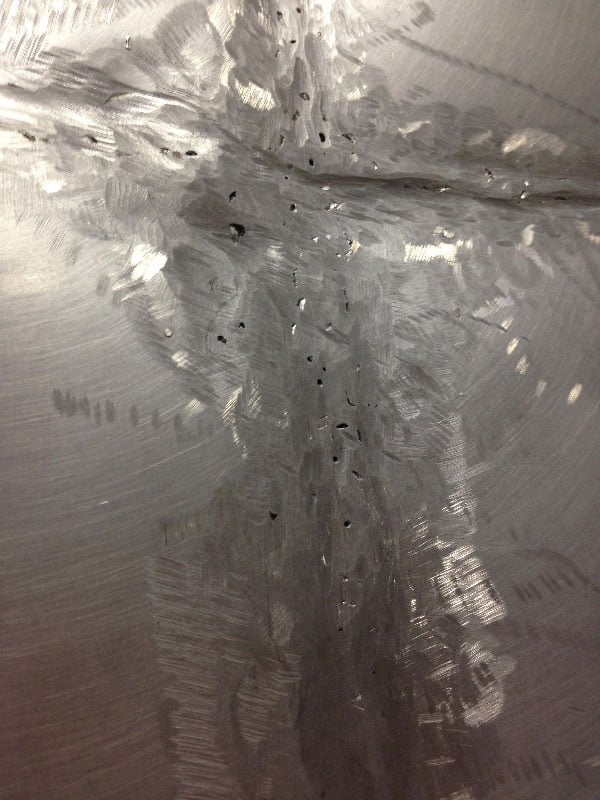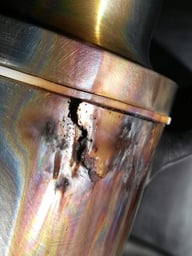Surface damage on a tank be unsightly, but more importantly, it can stop your equipment from operating at its best. Understanding the types of surface damage can help you control them better. Here is an overview of the 3 most common types:
Pitting
This is a localized type of corrosion in the form of cavities. These pits come in many forms, including narrow and deep, wide and shallow, and elliptical. In some cases the pitting will undercut and begin to run parallel to the surface. The most common cause of pitting is chloride ions (can be found in salts and bleach) which damage the passive film of stainless steel. Pitting can be prevented by controlling the pH, chloride concentration, and temperature in your workspace.
 |
|
Case of pitting found in a food processing facility |
Corrosion
 |
| Corrosion and cracking |
Several factors can cause corrosion including the characteristics of the media flowing through the system and the environment where the system is located. Similar to pitting, which is a type of corrosion, the pH, chemical make-up, temperature, and velocity of the media are all contributing factors to the rate of corrosion. Environmentally, air temperature and humidity level will also contribute to corrosion.
The most common types of corrosion that occurs are:
- General corrosion - an entire surface begins to deteriorate and the material will continue to weaken until it reaches the point of failure.
- Localized corrosion - includes pitting (see pitting); crevice corrosion, typically found under gaskets and clamps; and filiform corrosion, occurs under painted surfaces starting at small defects in the coating and spreading under the surface.
Deformation:
The material that makes up your tank can distort and bend into a shape that is different than the original structure, this is known as deformation. It can occur during tank fabrication when heat is applied. During welding the material will want to warp and pull towards the heat source; this type of deformation is very common, especially around sharp angles. Your tank can also show signs of deformation while it is in use. For example, when you are vacuuming your tank, the sides may flex in and out as the pressure changes inside of your tank.
 |
| Deformation from fabrication on a fermenter chimney |
The best way to get the most life out of your tanks is a regular maintenance and inspection program. You can download our maintenance checklist and start your program today.



